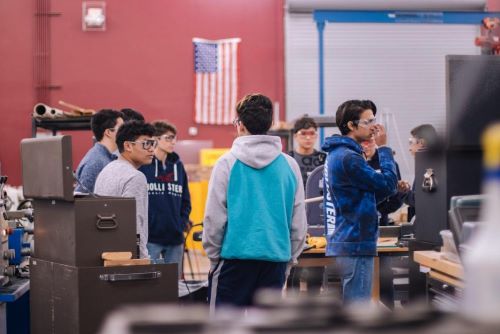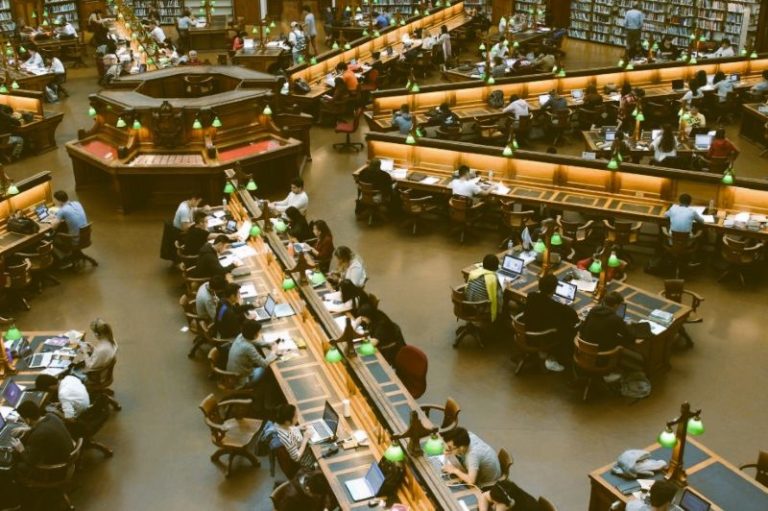

Analyzing education from today’s point of view might spur different opinions. On the one hand, the development of how people were educated led states to modernism. Still, some might consider that it hasn’t changed much, with the knowledge legacy remaining the same as after the industrialization period.
America’s educational system was and still is, regarding a few aspects, an example for the rest of the world ―offering diversity, flexibility and a unique academic experience. However, it can’t be compared with Asian or European standards, where education is much more affordable and fixated on improving society as a whole instead of focusing on individualism.
At the moment, Americans believe their educational system is changing for the better. However, with the unexpected expenses and polarized expectations from parents, it’s safe to say that many aspects need to be improved still.
Let’s see how education changed through the decades and how years of social and economic events contributed to the modern schooling system.
Religious teachings characterized the mid-1600s
Although correctly assessing the beginning of American education is challenging, we can pinpoint how the mid-1600s contributed to the formation of students. Common practices included teaching in church schools and apprenticeship programs where religious instruction would be highly emphasized. The religious roots were primarily protestant and continued to be similarly approached during the 1700s.
That’s when the first public school opened in the United States, dating back to 1625, called the Boston Latin School. The institution is still present in today’s education system and has remained a prestigious school.
What were students taught back then? In most cases, the curriculum was based on teaching the virtues of family, religion and community. At the same time, schools weren’t present in the South until after the American Civil War, and girls still had some restrictions, as they were only taught to read but not to write.
The 1700s brought significant changes
During the 1700s, higher forms of education were introduced in America, but only the wealthy could afford to pay for their teachings. Less fortunate people would attend charity schools that were few and maintained by private contributors or religious bodies. In a charity school, you would learn about religion, start reading and writing and also approach arithmetic to prepare yourself for mechanical jobs, which were expected.
Unfortunately, segregation and inequality were common among African American students, as they were mostly forbidden to learn. Only in 1896, after the end of Reconstruction, people of all races could study together and have similar educational goals. Despite this, the reality was different, as only a few African American students were able to engage in free academic courses.
Things were different back then. Now, you can enroll in an online course and attend classes
whenever possible. At the same time, studying materials are available all over the internet, and teachers are better prepared to offer the best guidance. After the 1700s, though, things would drastically change.
The 1800s brought common schools to life
The 18th century got us closer to the classroom model we know today. In these schools, students of all ages were taught by one teacher. However, these classes were not free, and parents had to pay tuition. In other cases, they provided housing for the teachers or offered commodities in exchange to enroll their children to classes.
One of the intellectuals promoting education in America was Horace Mann. He established a unique program for normal schools that would help train professional teachers. He also contributed to building some of these schools, especially in Massachusetts, where he was established.
The 1900s were a game changer to the educational system
During the late 1800s and early 1900s, a common idea spread among citizens that educating children and helping them reach their full potential would actively promote the development of a democratic society. The movement was founded by John Dewey, who considered schools and civil communities fundamental for human beings.
As industrialization became the norm, more teachers and students had to contribute to worldwide economic development, which is why the first public school was founded in 1839. By 1900, 31 states promoted compulsory school attendance for students aged eight to 14, and in 1918 every American state required students to finish elementary school.
During the early 1900s is when Montessori was first talked about. Maria Montessori characterized this system through “self-directed activities”.
The 2000s education meant new foundations
Progressive education had its roots in the 19th century, but only in the 2000s would it be taken seriously. It consisted of three central pillars supporting child-centered education, realist education and social reconstruction. Since then, schools have tried to eliminate the stiffness and traditional ways of teaching and approach pedagogy in innovative ways. Unfortunately, this is when the education system started to be left behind by social and economic changes, which are still occurring today.
However, the 2000s education meant activity programs that would include reading classes, dramatics, imaginative writing and other systems aiming to improve the community. New educational norms were described in the Goals 2000, which tested reading and mathematical skills as necessary standards for students to meet.
From the 21st century and beyond
Many things have changed over the centuries. Nowadays, the American curriculum solely focuses on encouraging critical thinking and reasoning. That’s because, in this fast-paced world of technology, not everything is accurate, and not all pieces of information are genuine and unaffected by bias. Therefore, students are prepared to question what they see, hear or read and decide if something is true or false. This also helps form opinions and view the world more objectively.
The future of education stands in using more technology. Tablets, laptops and mobile phones are becoming the standard of educational support, while teachers and educators are guiding students towards a more balanced life.
How much did the system change?
The American educational system went through considerable alterations through the decades. It’s up to people to decide if society is actively merging towards improvement, but what’s for sure is that education always matters, and everyone deserves access to it.


